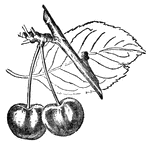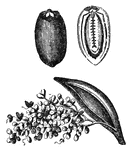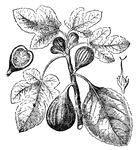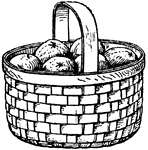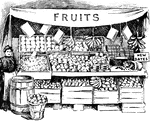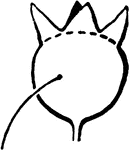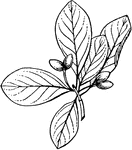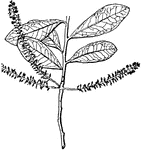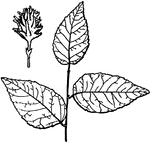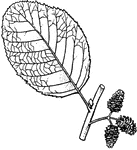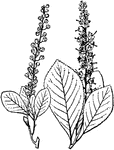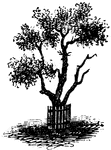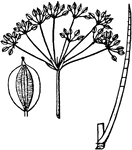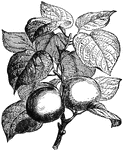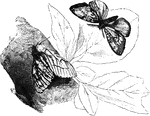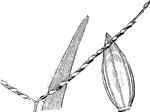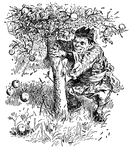
Dwarf, Apple Tree
The Queen of Brobdingnag's malicious dwarf violently shakes the apples off a tree in hopes to hurt the…

Fruitful cotton plant
An early, rapid fruiting, productive type of cotton plant, with low fruit limbs, short joints and continuous…
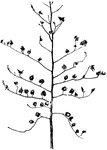
Unfruitful Cotton Plant
A late, slow fruiting, unproductive type of cotton plant, with high fruit limbs and long joints. Leaves…

Ilex
Leaves usually with a few remote teeth above the middle or at least bristle-tipped; fruit a red or black…
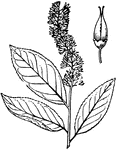
Itea
Sepals not pubescent or only slightly so; fruit a linear, two grooved capsule; leaves elliptic.
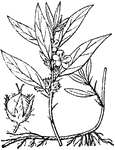
Hydrolea
Sepals united at base into a tube enclosing the ovary and later the fruit; leaves with spines in axils.

Agrimensor
"Agrimony (Agrimonia Eupatoria) showing branch, flowering spray, and fruit."-Whitney, 1902

Akee fruit
"…a fleshy fruit containing several large jet-black seeds partly embedded in a white spongy aril.."-Whitney,…

Sour-Sop
"Cultivated in the West and East Indies; it produces a large pear-shaped fruit, of an greenish color,…
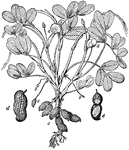
Common peanut
"Common Peanut (Arachis hypogæa). a, flowers; b, ovaries on lengthened stipes; c, forming fruit;…

Cecropia Moth
"The Cecropia Moth, A. Cecropia, is of a dusky reddish-brown; the wings expand six inches,…
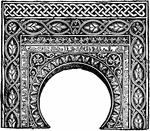
Arabesque Archway
"Arabesque is a style of ornamentation in which are represented men, animals (the latter consisting…
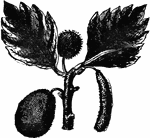
Breadfruit
"The breadfruit is a large, globular fruit of a pale-green color, about the size of a child's head,…

Breadfruit Fruit
"The breadfruit is a large, globular fruit of a pale-green color, about the size of a child's head,…

Cacao Plant
"Cacao, or cocoa, is the chocolate tree, and also the powder and beverage made with it obtained from…

Coffee Plant
"Coffee is the seed of an evergreen shrub, which is cultivated in hot climates, and is a native of Abyssinia…
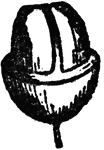
Coffee Bean
"Coffee is the seed of an evergreen shrub, which is cultivated in hot climates, and is a native of Abyssinia…

Coffee Bean
"Coffee is the seed of an evergreen shrub, which is cultivated in hot climates, and is a native of Abyssinia…
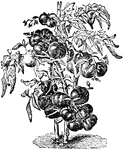
Tomato Plant
"Tomato, or Love Apple, is a plant of the natural order Solanaceæ. It is one of a genus of several…
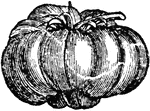
Tomato
"Tomato, or Love Apple, is a plant of the natural order Solanaceæ. It is one of a genus of several…

Tomato
"Tomato, or Love Apple, is a plant of the natural order Solanaceæ. It is one of a genus of several…

Vanilla Planifolia
"Vanilla is a genus of epiphytal Orchideæ, natives of tropical America and Asia. They are distinguished…
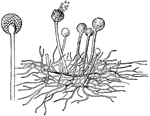
Common Mold
"Showing One of the More Common Molds found on Fruits and Bread. The tiny stalks grow verticallyinto…

Kinkajou
"Kinkajou is a genus of carnivorous mammals. They have prehensile tails, with which they hang on to…
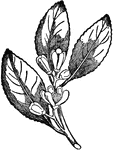
Lemon Branch
"The Lemon is the fruit of a small tree belonging to the same natural order as the orange. There are…
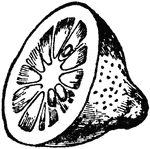
Lemon Cross-section
"The Lemon is the fruit of a small tree belonging to the same natural order as the orange. There are…
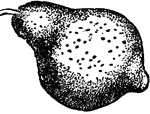
Lemon
"The Lemon is the fruit of a small tree belonging to the same natural order as the orange. There are…

Marsh Mallow
"The Marsh Mallow is a softly pubescent plant, with axillary cymes of large rosy leaves. a,…
